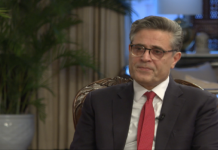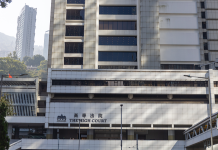DM Monitoring
WUHAN: A makeshift hospital ceased operation in Wuhan, capital of central China’s Hubei Province, on Wednesday as the coronavirus epidemic wanes.
Wuhan Leishenshan (Thunder God Mountain) Hospital was built in 10 days to treat COVID-19 patients. Construction began in late January. Its last batch of patients was transferred to normal hospitals on Tuesday.
At the closing ceremony, doctors and nurses waved flags and wrote their names on the clothes of their colleagues for memory.
“We hope that the hospital will never restart operations,” a local district official told an applauding crowd.
After the closing ceremony, medical workers were seen disinfecting and sealing the remaining wards.
Wang Xinghuan, head of the hospital, said they worked hard to achieve a low mortality rate of 2.3 percent among its patients, 45 percent of whom were in severe or critical conditions.
The 1,600-bed hospital is managed by the Wuhan-based Zhongnan Hospital of Wuhan University with over 3,000 medics from nine provincial regions in China. A total of 2,011 patients have been treated there.
“After Leishenshan was built, I can see the efforts to increase beds and the support coming from across the nation,” said Fang Yanhong, a nurse with the hospital.
The retirement of the hospital is a landmark development in Wuhan’s months-long battle with the epidemic, indicating the city’s COVID-19 treatment and medical operations are “back on the normal track,” Jiao Yahui, an official with the National Health Commission, told Xinhua.
Jiao said the medical facility was built at a time when “medical resources were in the shortest supply.”
It has played a very important role, enabling the city to admit more patients in a short period of time, thus helping contain the source of infection, she said.
The official said there is no timetable for dismantling the Leishenshan Hospital, noting it could be reactivated at any time.
Jiao also highlighted the importance of transferring patients from the two makeshift hospitals – Huoshenshan and Leishenshan – to four large hospitals in Wuhan. “We hope to secure the patients the most effective treatment by placing them at the four hospitals with high-quality medical resources in the city,” Jiao said, adding that the treatment of the severe and critical cases remained difficult.
Yang Xiao, an ICU doctor in Leishenshan Hospital, said the hospital is well equipped with intensive care facilities. “The ICU wards here are well equipped with ventilators, monitors and hemodialysis devices.






